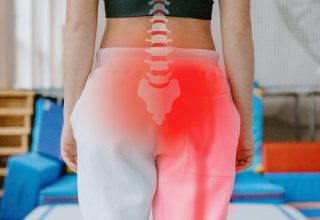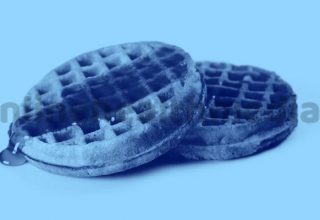Navigating Childhood Ailments: Understanding Upper Left Abdominal Pain
Pain In The Upper Left Abdomen: In a parenting cycle, children may encounter strange health problems. For instance, there is the issue of upper left abdominal pain.
As caring guardians, it is essential to understand the basics of this discomfort so that we can face these unknowns with confidence.
This comprehensive introduction to upper left abdominal pain in children will help dispel a cloud of mystery from these pains, explaining what they are and enabling parents to know how best to react.
Discalimer: We are not professionals in this platform. Our content are limited to pure research. Therefore, do not take the following as a diagnosis.
The Pediatric Pain

With their bright natures, children sometimes have health problems that might baffle parents.
One problem is upper left abdominal pain. In this guide, we’ll explore the substance of this pain in-depth, providing parents with some useful pointers on how to cope better.
Deciphering The Anatomy: What Lies in the Upper-Left Abdomen
Understanding upper left abdominal pain begins with a basic knowledge of what that part contains.
Stomach, spleen.
They talk about the left kidney and a portion of the colon make up this upper left abdomen. If any of these organs encounter difficulties, it can result in abdominal pain.
These basic facts enable parents to differentiate possible causes and prepare for more informed decision-making.
The trouble with upset tummies
A common cause of upper left abdominal pain in children is digestive problems. Discomfort may arise from indigestion, constipation, or gas.
Indigestion, in which food does not break down properly, can cause a child to feel full and uncomfortable. Another common ailment for kids is constipation, which causes pain from the backing-up of stool. Even gas, which is natural in the process of digestion, can cause bloating and discomfort.
Parents are advised to monitor what their child eats, making sure they get enough fiber and fluids. Properly recognizing and treating digestion problems, parents can frequently alleviate upper left abdominal pain.
Rare causes: Beyond the Digestive System
Digestive problems are common, but it is worth looking into less often-seen causes of upper left abdominal pain.
Strained muscles and ligaments are also common culprits as a result of play or minor injuries. Although less common, kidney infections also manifest themselves as abdominal pain.
Abdominal discomfort is a symptom of some rare conditions, such as certain genetic disorders.
Understanding these relatively rare causes is beneficial to parents who think about things in a comprehensive way and consider different scenarios.
Pediatrician Input Is Important
When it is a question of a child’s health, the best idea is to have one’s pediatrician go over things. Pediatricians deal with children’s health.
They may discover things about the reasons for upper left abdominal pain that don’t occur to others. Booking an appointment at the proper time enables a complete interview and physical examination of the child.
For good reasons, they urgently need to see a medical expert for an accurate diagnosis and effective solution. The relationship between parents and pediatricians should be as open as possible. You should give all relevant information to the pediatrician.
Testing and Examining
In the doctor’s office, it is helpful to understand what testing is. Tests and examinations are seen as a step in identifying the source of pain.
This category might include blood tests, ultrasounds, or other non-invasive procedures.
These are not tests which can cause anxiety. Healthcare professionals use these instruments to gather information about and make decisions regarding the child’s health.
Home Care Tips: Easing Discomfort
After diagnosis or while waiting for one, parents can do some things at home to alleviate discomfort in their children. It is really important that the child gets enough rest and keeps well hydrated.
Even eating right, with foods that are easy to digest, can be a help. Sometimes, a warm compress on the abdomen can help.
Home care is not to replace professional medical advice, but it can help ease a child’s pain in the process.
Looking and Moving Forward
However, after dealing with the pain in the upper left abdomen, it’s important for parents to keep their ears to the ground and take preventative steps so that there is no relapse. Most importantly, there are no more causes for the pain.
It could involve changes in diet, routine visits to the pediatrician, or leading a more active life.
The experience becomes a guideline that helps families elect proactive choices for their children’s interests.
When to Worry — Recognizing Red Flags (Pain In The Upper Left Abdomen)
Understanding when to worry is crucial. If a child has long-term pain, which is especially serious, with possible vomiting, fever, or blood in stool, it’s time to be alarmed. See your doctor right away to rule out anything serious.
Parents should trust their instincts. It’s best to seek professional help immediately if something feels amiss. That can change the whole picture.
Persistent Severe Pain: Persistent, severe pain is the red flag you must not ignore.
Accompanying Symptoms: Abdominal pain accompanied by vomiting, fever, or blood in stool all require immediate attention.
Trust Your Instincts: See a doctor quickly if something doesn’t feel right.
Quick Action Matters: When in doubt, don’t wait; early medical intervention is key.
Pediatrician Consultation: If the pain continues, see a pediatrician for an in-depth examination.
Recall: The earlier the intervention, the better for your child’s health. Hopefully, we covered everything, as parents if you have more to add, please do so in the comment section below.
Also read
- Top Electric Toothbrush For Kids.
- The Most Common Types Of Bicycle Accident Injuries.
- Compelling Reasons To Incorporate Shilajit Into Your Diet.



